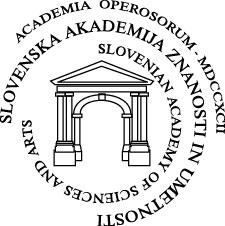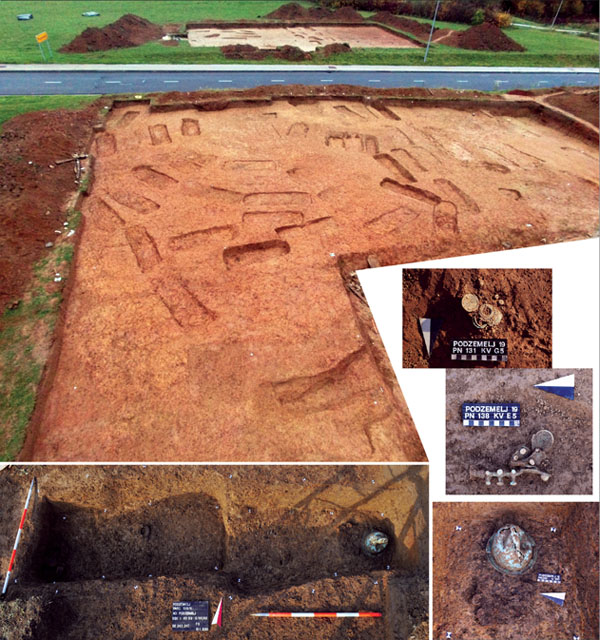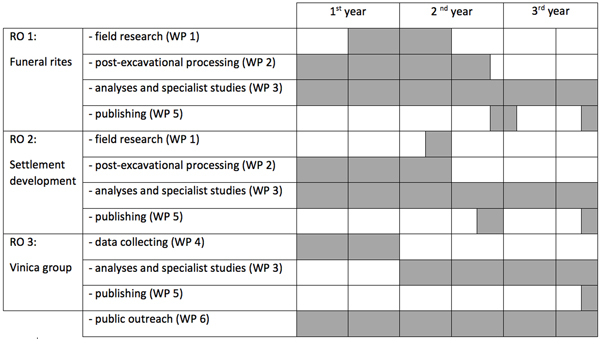Colapians – the Iron Age people along the river Kolpa
-
Original Title
Kolapijani – ljudstvo ob reki Kolpi v železni dobi
Project Team
Otmar Kovač, Nataša Nemeček, Snežana Tecco Hvala, PhD, Dragan Božič, PhD, , Helena Grčman, PhD, Anja Ragolič, PhD, Tjaša Tolar, PhD, Borut Toškan, PhD, Tilen Podobnik-
ARIS Project ID
L6-2627
-
Duration
1 September 2020–31 August 2023 -
Link to SICRIS
18390 -
Project Leader
-
Financial Source


Partners
Univerza v Ljubljani, Biotehniša fakulteta
The social and historical changes in Bela Krajina at transition from the Early to the Late Iron Age (E/LIA) are studied in the case of in this region most important Podzemelj Iron Age complex. The excavations at the southern summit of Kučar provide new insight into the intensity and changes in the settlement, but the newly discovered cemetery at Pezdirčeva njiva shows even greater scientific potential. It presents the core base for studying the contact between the indigenous peoples and their Hallstatt cultural tradition and the population in the LIA, who are the bearers of Vinica culture – perhaps in ancient written sources testified Colapians (Fig. 1). The analysis of the development and definition of the chronological phases of the Vinica group is a great desideratum of research. With the discovery of new site in Podzemelj, a more detailed study of this cultural group and the LIA in Bela Krajina is now possible for the first time.

Fig. 1: Late Iron Age communities in Slovenia with marked main natural trails from Bela krajina (arrows) to areas of the Colapian and Iapodic communities in the NW of Croatia
The project – supported by the Slovenian Academy of Sciences and Arts –significantly complements the current knowledge of the Bela Krajina settlement picture during the Iron Age and considerably contributed to elucidating the development and origins of the community that inhabited the Kolpa River area. In order to achieve the main aim of the project, we follow three objectives (RO):
1. Studies of funeral rites at the transition from the E/LIA
A key site for this RO is the cemetery at Pezdirčeva njiva (Fig. 2), where we examine the dynamics of burial, the social structure and different changes that occur on the transition period.

Fig. 2: Pezdirčeva njiva cemetery, 2019 excavations with late Hallstatt princely grave with a Negova helmet and some Vinica-group attire. Photo: L. Grahek, O. Kovač, F. Aš.
2. Analysis of the IA settlement at Kučar
With set of studies we determine the intensity and changes in the settlement pattern of the Podzemelj complex with the main settlement on hill Kučar. In the younger Hallstatt period, there appeared to be radical changes, while the settlement picture in the LIA is not clarified yet.
3. Research on the Vinica cultural group
Based on a detailed study of new graves that provide insight into the characteristics of the Vinica community the first typo-chronological scheme is presented. Great attention is given to examining the formation and development of this group in relation to the Iapodes and Colapians in neighboring Croatia.
***
The research is conducted in collaboration with specialists in various research in archaeology. The results are evaluated in a final monograph, which serve as a reference work for various studies of social and cultural processes at the transition of the E/LIA in wider SE Alpine region. It contributes to the development of the Slovenian archeological profession, but it can also be used for educational purposes and for the promotion and management of the cultural heritage of this area.
Project team
- Lucija Grahek, project leader
- Otmar Kovač, external associate for excavations and field surveys
- Nataša Nemeček, external associate for conservation / restoration of archaeological finds and chemical analyses of non-ceramic grave goods) - Sneža Tecco Hvala, studies of Early Iron Age, material culture, funeral rites, social structure
- Dragan Božič, studies of Late Iron Age, material culture, Mecklenburg Collection
- Helena Grčman, University of Ljubljana, Biotechnical Faculty, leader of a pedological and geochemical sediment research team
- Anja Ragolič, epigraphy and studies of ancient literary sources for Iapodes and Colapians
- Tjaša Tolar, paleobotanical and anthracotomic analyses and studies
- Borut Toškan, archaeozoological analyses and studies
- Tilen Podobnik, expert technical associate
The research will be conducted in phases and individual work packages (WP) according to three basic sets of research objectives (RO) (Fig. 3):

Fig. 3: Timetable of proposed project
Phase I (1st year)
Research objectives 1:
- continuation of field research on Pezdirčeva njiva (WP 1)
- post-excavational processing of the results of previous field researches (WP 2 and 3)
- pedological sampling and geochemical analyses (WP 2 and 3)
Research objectives 2:
- archaeozoological and paleobotanical analyses of settlement samples from southern summit of Kučar (WP 3)
- study of new settlement researches in Metlika (WP 2 and 3)
Research objectives 3:
- study of the Vinica graves from the Mecklenburg Collection (WP 4)
- study of published Iapodic sites and sites associated with the Colapians in Croatia (WP 4)
- data collecting of the historical and epigraphic sources for studies of Colapians and Iapodes (WP 4)
Phase II (2nd year)
Research objectives 1:
- completion of field research (WP 1)
- post-excavational processing; conservation, drawing and cataloging of finds (WP 2)
- archaeobotanical, pedological and geochemical analyses of collected samples (WP 3)
- SEM analysis of selected finds (WP 3)
- preparation of a catalog publication of the results of excavations at the Pezdirčeva njiva site (WP 5)
Research objectives 2:
- preparation of publication the results of new settlement research in Metlika (WP 5)
- study of settlement and metallurgical processing areas at the foot of the Podzemelj main settlement at Kučar hill (WP 2 and 3)
- comparative, diachronic study of the development of settlement at Kučar (WP 3)
Research objectives 3:
- typological and chronological analyses of burials from the Late Iron Age at Pezdirčeva njiva (WP 3)
- comparative studies of material from the Vinica group sites with Iapodic material culture and the sites associated with the Colapians in Croatia (WP 3)
- study of historical and epigraphic sources on Colapians and Iapodes (WP 3)
Phase III (3rd year)
Research objectives 1:
- typological, chronological, statistical and spatial analyses of burials at Pezdirčeva njiva (WP 3)
- studies and interpretation of changes in funerary customs during the transition from the Early to the Late Iron Age (WP 3)
- preparation of the publication of the results of various studies and analyses (WP 5)
Research objectives 2:
- interpretation of the development and settlement dynamics of the Podzemelj Iron Age center (WP 3)
Research objectives 3:
- completion of studies of the material culture of the Vinica group (WP 3)
- preparation of concluding discussion on the social and cultural aspects of life in Bela Krajina during the younger Hallstatt and the Early Iron Age (WP 3)
- preparing and editing the final publication of the results of analyses and studies carried out (WP 5)
GRAHEK Lucija, KOVAČ Otmar, Podzemelj – železnodobno središče v Beli krajini v luči novih raziskav (Podzemelj – an Iron Age centre in Bela krajina, in the light of new research). − Arheološki vestnik 71, 2020, 435–467.